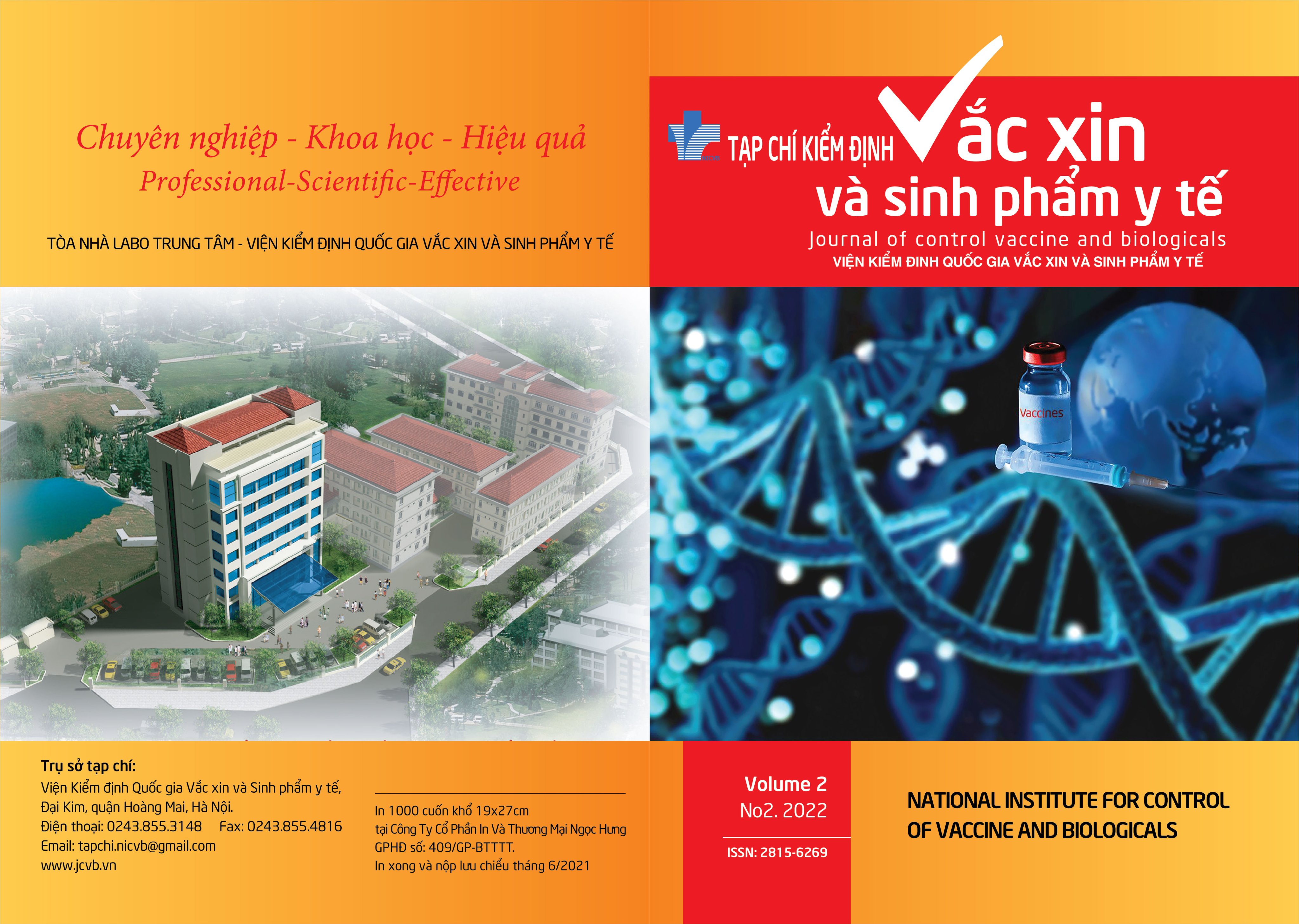EVALUATION OF SITUATION AND TESTING OF MEASURES TO IMPROVE THE REPRODUCTIVE PERFORMANCE OF GUINEA PIGS (CAVIA PORCELLUS) REARED AT THE NATIONAL INSTITUTE FOR CONTROL OF VACCINES AND BIOLOGICALS
DOI:
https://doi.org/10.56086/jcvb.v2i2.38Keywords:
Guinea pig, laboratory animal, reproductivity of guinea pigsAbstract
Background/Purpose: Guinea pigs (Cavia porcellus) is one of the most common laboratory
animals used for vaccine and biological tests, but limited information on this animal has been
reported in Vietnam. The aim of this study is to evaluate the reproductive performance of Guinea
pigs and to test the method of improving their reproductive performance as the basic for the
development of Guinea pigs raised in the National Institute for Control of Vaccine and Biologicals.
Methods: Empirical description research in the laboratory by the standard methods used in
animal husbandry. Evaluation of the reproductive performance was performed on 300 litters.
Testing the method of improving reproductive performance was conducted on 50 control
litters and 50 experimental litters.
Results: The number of piglets born alive and the average born weight of Guinea pigs at
third parity were highest (2.66 newborn/litter and 101.14g/head); range of mean was 2.27
piglets and 93.29g. The average weaning weight at the second and third parity was similar
and higher than other parities rest of litters (241.90g/head; 242.50g/head). The mean of
survival rate at birth (within 24 hours after birth) of the 2nd (84.30%), 3rd (82.10%), and
4th parities (80.70%) was higher than that of 1st, 5th, and 6th parities. The survival rate at
weaning 4th parity was the highest, accounting for 74.33%. The method of using a foster
mother with a maximum of 3 piglets/mother increased the survival rate of guinea pigs from
birth to weaning (81.33%) compared to that without fostering (73.83%) and increased the
body weight of guinea pigs at 1 week of age, 2 weeks of age, and 3 weeks of age.
Conclusion: Guinea pigs raised in the National Institute for Control of Vaccine and
Biologicals had the same reproductive and growth efficiency with other facility. The adoption
of polyculture with a maximum number of 3 piglets/mother increases the reproductive
efficiency and growth of Guinea pigs







